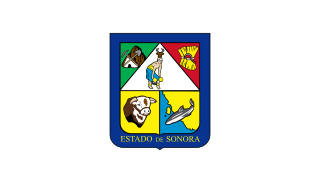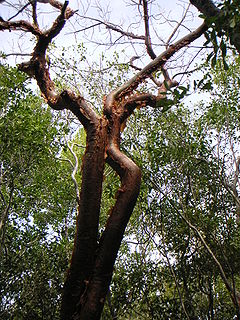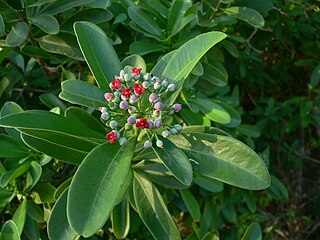| Bursera filicifolia | |
|---|---|
| Scientific classification | |
| Kingdom: | Plantae |
| Clade: | Angiosperms |
| Clade: | Eudicots |
| Clade: | Rosids |
| Order: | Sapindales |
| Family: | Burseraceae |
| Genus: | Bursera |
| Species: | B. filicifolia |
| Binomial name | |
| Bursera filicifolia Brandegee 1908 | |
| Synonyms [1] | |
| |
Bursera filicifolia is an uncommon North American species of trees in the Frankincense Family in the soapwood order. It has been found only in the States of Sonora and Baja California Sur in northwestern Mexico. [2]

The Burseraceae are a moderate-sized family of 17-19 genera and about 540 species of flowering plants. The actual numbers differ according to the time period in which a given source is written describing this family. The Burseraceae are also known as the torchwood family, the frankincense and myrrh family, or simply the incense tree family. The family includes both trees and shrubs, and is native to tropical regions of Africa, Asia, and the Americas.

Sapindales is an order of flowering plants. Well-known members of Sapindales include citrus; maples, horse-chestnuts, lychees and rambutans; mangos and cashews; frankincense and myrrh; mahogany and neem.

Sonora, officially Estado Libre y Soberano de Sonora, is one of 31 states that, with Mexico City, comprise the 32 federal entities of United Mexican States. It is divided into 72 municipalities; the capital city is Hermosillo. Sonora is bordered by the states of Chihuahua to the east, Baja California to the northwest and Sinaloa to the south. To the north, it shares the U.S.–Mexico border with the states of Arizona and New Mexico, and on the west has a significant share of the coastline of the Gulf of California.
Bursera filicifolia is a shrub or small tree with gray bark unlike the red bark of the closely related B. laxiflora. Leaves are pinnately compound with 9-19 leaflets, hairy on both sides. Drupes are hairless and egg-shaped. [3] [4]
Bursera laxiflora is a North American species of trees in the frankincense family in the soapwood order, native to northwestern Mexico. It is fairly common in Sonora with additional populations in Sinaloa, Baja California Sur, and Socorro Island. There is a report of the species being found in the United States, but it is from the property of the Arizona-Sonora Desert Museum west of Tucson, most likely a cultivated or escaped specimen.








